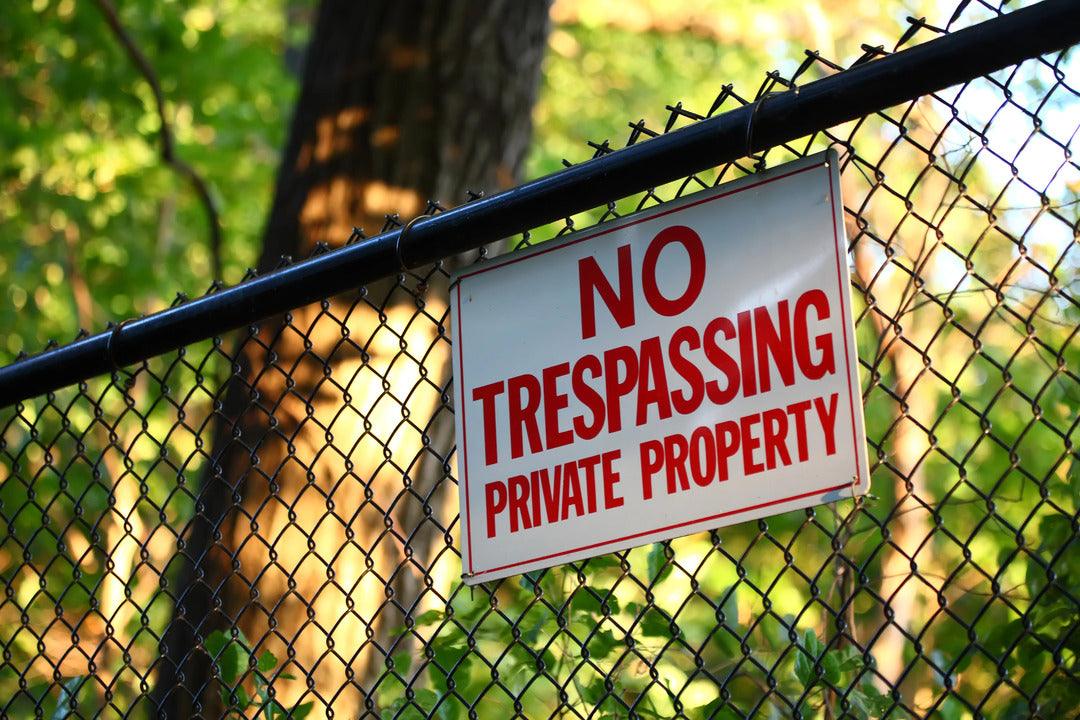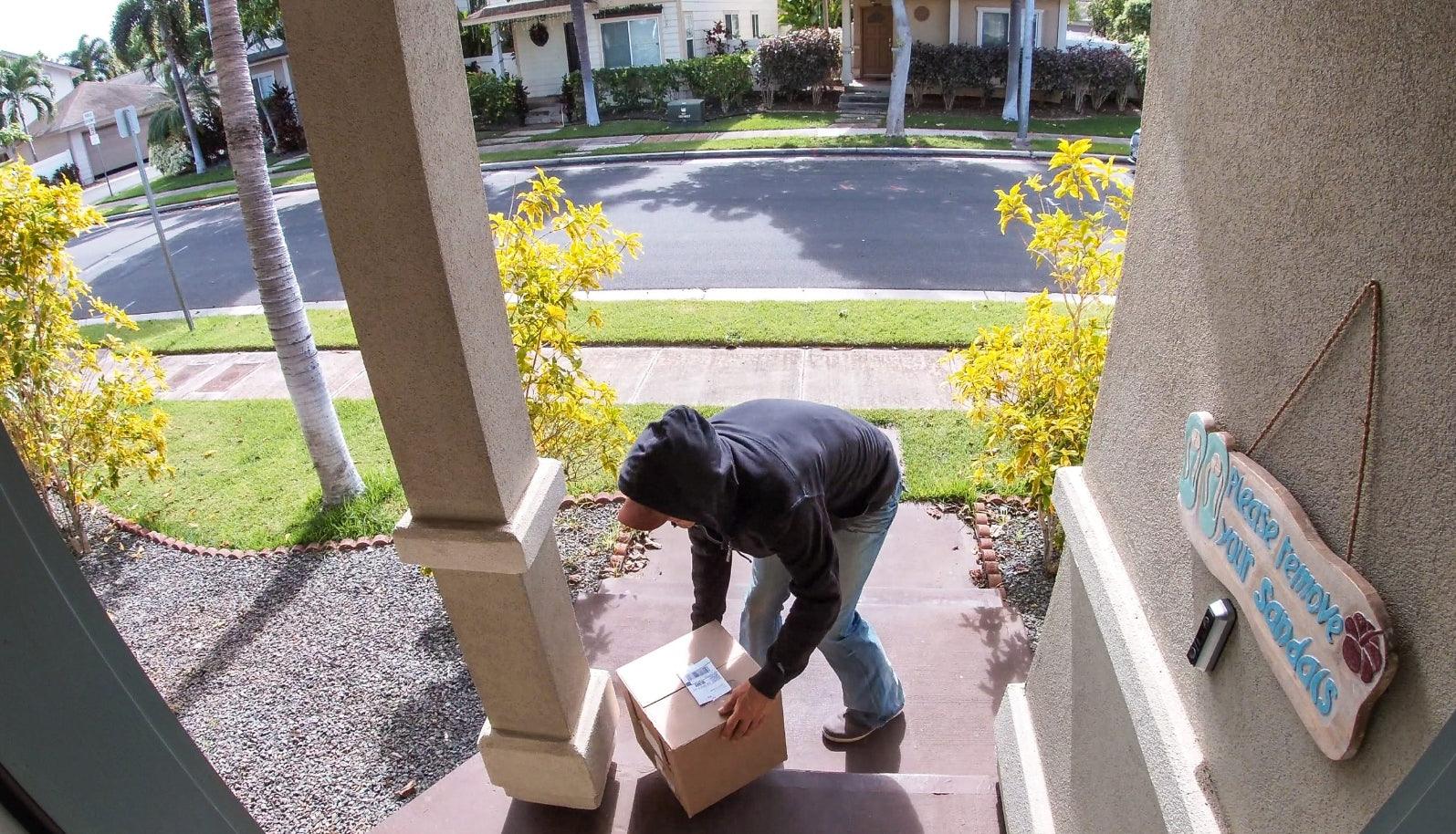Encountering a trespasser on your property can be unsettling, to say the least. Whether it's a one-time occurrence or a recurring issue, knowing how to handle the situation calmly and legally is crucial. In this guide, we'll walk you through practical steps and legal advice to protect your rights and ensure your safety.
What is Trespassing?
Instead of asking what trespassing is, the real thing we want to know is how to define and prove someone in trespassing.
Trespassing occurs when someone enters your property without permission. It's not just a minor inconvenience; it's a violation of your private space and can sometimes lead to more serious crimes. But how do you prove someone is trespassing?
Clear Property Boundaries
The first step in proving trespassing is having well-defined property boundaries. Without clear boundaries, it can be challenging to prove that someone has entered your property unlawfully. Consider the following:
-
Fences and Walls: Installing fences or walls around your property can clearly demarcate your boundaries. They also act as a physical barrier to entry.
-
Property Markers: Use property markers or stakes to define your land, especially if it’s extensive. Make sure these markers are visible and maintained.
No Trespassing Signs
Posting “No Trespassing” signs is a straightforward way to inform others that they are not allowed on your property. These signs serve as a warning and a legal notice. Here are some tips:
-
Placement: Place signs at all entry points and at regular intervals along the perimeter of your property.
-
Visibility: Ensure the signs are visible and legible. Use reflective signs for nighttime visibility.
-
Legality: Check local laws regarding the wording and placement of signs to ensure they are legally enforceable.
Documentation
Having solid documentation is crucial if you need to take legal action against a trespasser. Documentation can include:
-
Photos and Videos: Capture clear images or video footage of the trespasser on your property. Security cameras can be invaluable for this purpose.
-
Witness Testimonies: If others witnessed the trespassing, their statements could support your case.
-
Incident Logs: Keep a detailed log of each trespassing incident, including dates, times, and descriptions of the events.

What to Do If Someone Trespasses on My Property
If you find someone trespassing on your property, it's essential to act appropriately to ensure your safety and protect your rights. Here are the steps you should follow:
1. Stay Calm
First and foremost, stay calm. Reacting with anger or aggression can escalate the situation and put you at risk. Take a moment to assess the situation and gather your thoughts.
2. Assess the Situation
Determine if the trespasser poses an immediate threat. If they appear dangerous or if you feel threatened, prioritize your safety and call law enforcement immediately.
3. Politely Ask Them to Leave
If you feel safe and the trespasser doesn’t seem to pose a threat, approach them calmly and politely ask them to leave. Use clear, firm language to communicate that they are on private property and must leave immediately.
4. Document the Incident
Whether the trespasser leaves or not, document the incident. Take notes, photos, or videos of the trespasser, their actions, and any potential damage they may have caused. This documentation can be vital if you need to involve law enforcement or take legal action later.
5. Report to Authorities
If the trespasser refuses to leave or if you feel threatened at any point, contact local law enforcement. Provide them with all necessary information, including your documentation. The police can handle the situation safely and legally, and their involvement may deter future trespassing.
6. Seek Legal Advice
If trespassing continues or if you’ve suffered damages, consult a lawyer to understand your rights and explore legal actions. Options might include filing a restraining order, seeking an injunction, or pressing charges against the trespasser.
How to Protect Your Home from Trespassers
Preventing trespassing is often easier than dealing with it after it occurs. Here are some proactive steps you can take to safeguard your property.
Install a Fence
A sturdy fence serves as a clear boundary and a physical barrier. When installing a fence:
-
Height and Material: Choose a height and material that suits your needs and local regulations. Taller fences offer more security.
-
Locked Gates: Ensure gates are lockable to prevent easy access.
-
Maintenance: Regularly inspect and maintain your fence to keep it in good condition.
Put Up No Trespassing Signs
As mentioned earlier, “No Trespassing” signs are a simple yet effective deterrent. Here are some additional tips:
-
Custom Signs: Consider customizing your signs to address specific concerns (e.g., “No Trespassing – Private Property – Violators Will Be Prosecuted”).
-
Placement Strategy: Ensure signs are placed where they are easily visible from all potential entry points, including trails, driveways, and common paths.

Install Outdoor Security Cameras
Surveillance cameras are an excellent deterrent and provide valuable evidence if a trespassing incident occurs. When installing cameras, it's important to consider several key features that enhance their effectiveness in preventing trespassing:
-
Coverage: Ensure cameras cover all entry points and high-traffic areas. Proper placement is crucial for maximum security. Place cameras at all entrances, including front and back doors, windows, and any other potential access points. Don’t forget less obvious spots like basement windows or side alleys. Wide-angle lenses can help cover larger areas with fewer cameras, providing comprehensive surveillance without blind spots.
-
Visibility: Visible cameras can deter would-be trespassers, while hidden cameras can capture evidence without alerting the intruder. Strategically position visible cameras to maximize their deterrent effect. When trespassers see cameras, they know they're being watched, which can discourage them from proceeding. Meanwhile, hidden cameras can ensure you have a backup to capture any malicious activity even if the visible ones are tampered with.
-
Quality: Invest in high-quality cameras with night vision and motion detection for better surveillance. High-definition (HD) cameras provide clear images and videos, which are crucial for identifying trespassers. Night vision capabilities ensure that your property is protected around the clock, allowing cameras to capture clear footage even in low-light conditions. Motion detection is another key feature; it can alert you to any movement on your property, reducing the need to monitor footage constantly. When motion is detected, these cameras can start recording automatically and send alerts to your smartphone or email, enabling you to respond quickly.
-
Remote Access: Modern security cameras often come with remote access features, allowing you to monitor your property in real-time from anywhere using a smartphone app or computer. This can provide peace of mind when you're away from home and enable you to act swiftly if suspicious activity is detected.
-
Storage and Backup: Ensure that your security system has adequate storage options for recorded footage. Cloud storage is a popular option as it prevents footage from being lost if the camera is destroyed or stolen. Local storage, such as a DVR or NVR system, can also be effective, especially if it has a large capacity and supports easy data retrieval.
-
Two-Way Audio: Some advanced cameras come with two-way audio capabilities, allowing you to communicate with anyone on your property. This can be a powerful deterrent; simply asking a trespasser what they are doing through the camera's speaker can be enough to scare them off.
-
Weather Resistance: Outdoor cameras should be weatherproof to withstand various environmental conditions like rain, snow, and extreme temperatures. Look for cameras with an IP65 rating or higher to ensure durability and consistent performance.

Protect Your Home from Trespassers with aosu
Introducing aosu outdoor security cameras, your ultimate solution for reliable and advanced home security. These state-of-the-art cameras offer crystal-clear HD video, ensuring you never miss a detail. With motion detection alerts, weatherproof design, and night vision capabilities, they provide round-the-clock protection. The easy-to-install system includes two-way audio, allowing you to communicate with visitors remotely. Additionally, the aosu app integration lets you monitor your property from anywhere. Whether it's day or night, rain or shine, aosu outdoor security cameras are designed to keep your home safe and secure.
Wrapping Up
Dealing with trespassers can be stressful, but knowing how to handle the situation and protect your property is key. By understanding what constitutes trespassing, taking appropriate action, and implementing preventive measures, you can ensure your home remains secure.










Leave a comment
This site is protected by hCaptcha and the hCaptcha Privacy Policy and Terms of Service apply.